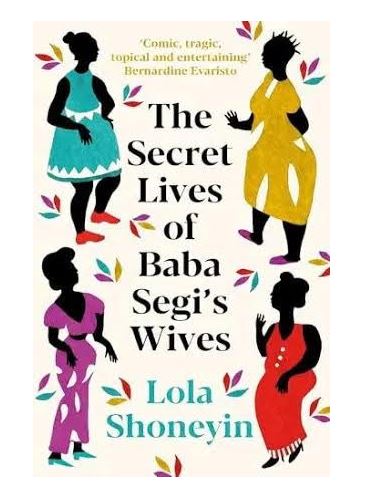The Secret Revolt Within: A Feminist Manifesto in The Secret Lives of Baba Segi’s Wives

By Taiwo Michael Oloyede
Lola Shoneyin’s The Secret Lives of Baba Segi’s Wives is no ordinary domestic novel. What initially presents itself as a humorous peek into a polygamous Nigerian household quickly unfurls into a nuanced, unsparing feminist manifesto. In this visceral, deeply affecting work, the body becomes both battleground and barricade; silence is weaponized, and rebellion is coded in the domestic rhythms of everyday life. Through deft characterization and layered storytelling, Shoneyin stages a critique of patriarchal structures so embedded in culture that they disguise themselves as tradition, affection, or spiritual order. Baba Segi is introduced as a comic figure—a self-satisfied, gluttonous patriarch with a rotund belly and an even more inflated ego. But Shoneyin resists reducing him to parody. He is a cultural artifact: the literal embodiment of masculine entitlement shaped by polygamous privilege. His perception of manhood is bound to fertility and domination. He does not love his wives as individuals; he collects them like livestock, each ranked by their ability to bear children. This obsession is symbolic. In a society where a man’s potency equals power, the womb is no longer a sacred space—it becomes a transactional chamber, and women become currency.
Yet it is within this misogynistic structure that Shoneyin scripts her manifesto. The rebellion simmers in kitchens, bedrooms, and prayer rooms—unfolding in a quiet, devastating crescendo.
Bolanle, the university-educated fourth wife, is the novel’s most apparent feminist figure— because her mere presence questions the household’s deeply entrenched norms. She enters Baba Segi’s home like a mirror held up to a grotesque society. Her refusal to adopt the scheming, sycophantic behaviors of the other wives disorients them, but her seeming passivity is not weakness. Bolanle is the radical question. Her silence is a deliberate refusal to play the expected role.
She represents a newer Nigeria—educated, introspective, and increasingly aware of the gendered violence couched in tradition. Yet, she is not spared the trauma: her history of rape, which she internalizes as shame, speaks to the larger theme of how patriarchal culture silences women’s suffering. In this way, Bolanle is a woman twice betrayed—first by a male predator, then by a culture that blames the victim. Her final decision to leave Baba Segi’s house is a clarion call—a defiant exit from a system that sought to erase her personhood in exchange for status and protection.
But to reduce feminist resistance to Bolanle alone would be a misreading. The older wives—despite being uneducated and deeply complicit—are themselves subversive. Their “secret” is not just the deception of Baba Segi’s paternity. It is their act of reclaiming their bodies in a system that tried to make them hollow vessels for a man’s legacy. By seeking children outside their husband’s impotent body, they flip the script. They perform a radical, though ethically fraught, act of survival: they assert their agency in the only way their context allows.
Iya Segi, the first wife, emerges as the most Machiavellian and formidable. She is the brain behind the deception, orchestrating the fertility fraud with cold precision. But she is also a tragic figure. Her rebellion is reactive; her power depends on manipulation. She is both prisoner and warden—a woman whose only way to escape vulnerability was to become complicit in the system that oppressed her. This reveals the brilliance of Shoneyin’s feminist ethos: it is intersectional, contextual, and refuses to moralize simplistic choices. These women are not feminist archetypes; they are women in war zones, fighting with what they have.
One of the novel’s most powerful motifs is the female body—not as erotic object but as a territory of struggle. Fertility, rape, childbearing, and sexual performance are all employed to discuss how a woman’s body is not her own in patriarchal societies. Bolanle’s barrenness is seen as failure, not Baba Segi’s impotence. The wives’ bodies are policed, but never honored. Desire is weaponized. Virginity is fetishized. Through this, Shoneyin reveals how bodily autonomy is a cornerstone of feminist liberation. When Bolanle leaves the household and metaphorically repossesses her body, she doesn’t just escape Baba Segi—she reclaims herself. The prose oscillates between Yoruba-inflected idioms and sharp English narration, reinforcing the cultural tensions at play. Shoneyin’s humour is biting and potent. It lures the reader in, only to pierce the heart with unexpected gravitas. The chapters alternate perspectives, giving voice to women who would typically be footnotes in someone else’s saga. By granting each wife narrative agency, the novel performs its own act of feminist redistribution—of voice, memory, and justice.
The post The Secret Revolt Within: A Feminist Manifesto in The Secret Lives of Baba Segi’s Wives appeared first on Vanguard News.







